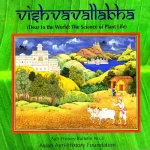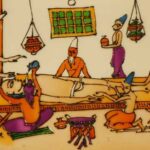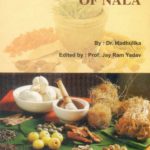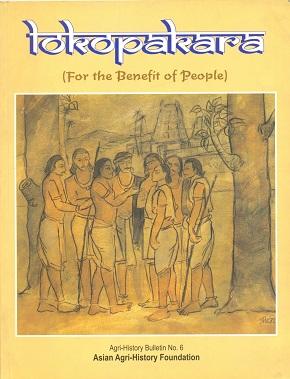
Lokopakaara — For the Benefit of People. A title which immediately captures the reader’s attention, this tome is one meant for the good of all mankind. Equal parts commentary and almanac, it is an easy to digest amalgamation of relevant knowledge to improve the condition of society.
Author
Despite the grandiose name, Chavundaraya II was not a ruler himself, but a poet-scholar in Jaisimha II’s court (1015-1042 CE). The Chalukyas of Karnataka (and their Eastern collateral branch in Andhra) were educated and refined rulers who gave great patronage to poets and pandits alike. Most famous was of course Somesvara III, who was a Chalukyan King and author of the celebrated Abhilasith-artha-chinthaamani, better known as Manasollasa.
“The author of Lokopakara is also known as Chavundaraya II. This is because another Chavundaraya, referred as Chavundaraya I, preceded him by several decades and was a great minister, Commander-in-Chief, as well as litterateur in the court of the Ganga rulers of southern Karnataka. ” [1, v]
Another fact of interest is that “Chavundaraya I set up the world famous Gommateshwara statue at Shravanabelagola in Karnataka around 980 AD.” [1, v]
Karnataka was a seat of some of the most expansive Southern Empires, from the Rashtrakutas to eternal Vijayanagari itself. The rulers were generally Kannada origin, sometimes not, but always rooted in the dharmic culture of Bhaarathavarsha. The Lokopakaara is a legacy of this Imperial tradition of Karu desa, and was authored by a legatee of these rulers, and a stalwart of their court.
Composition
The Lokopakaara is another entrant in a long line of intellectual yet practical tomes produced by vidvaans of various backgrounds. Not only the aforementioned Manasollaasa, but also the Brhath Samhitha of Varaahamihira, the Brhath Jataka, the Charaka Samhitha, and the Maya Matam are part of an ancient tradition of practical knowledge meant to benefit the people-at-large. [1, 3]
Written in Old Kannada (Halegannada), as opposed to contemporary Kannada (Hosagannada), a manuscript of this text was edited by H. Sesha Iyengar and is found in the Adyar Library of Chennai. A veritable Nighanthu (Encyclopedia), it is an ornament to any Classical Indic library and provides insight into the Bhaarathavarsha of the Early Medieval period.
“Some of the medicinal preparations and the preparations of ‘supa shastram’ here in this work have been so much a part of our daily life…existed in literature of yesteryears.” [1, 7]
Indeed, there is remarkable continuity between the ancient Paaka Darpana of Nala, the Soopa Sastra of late antiquity, as well as the medieval Lokopakaara. Some traditional kannada recipes include savige (vermicelli), mandige (paratha stuffed with finely ground sugar and cardamom), and sandige (fried grain balls made from pulse flour and ash gourd with sesame and salt). [1, 104] Even more relevant, is the applicability of the various horticultural and medicinal concoctions utilised by the translator of the present abridged text. He has attested to its efficacy in everyday rural life. [1, 7] Nevertheless, errata is apparent in the current translation, and its abridgement and contortion necessitates a new edition.
Moving on, sections of this text beyond medicine and cookery include agriculture and perfumery. Indeed, it is apparent that the ancient royals of Karnataka had access to a wondrous selection of fragrances and aromas that bedecked the anthahpuras of the age.
A work in 12 Chapters, recipes specifically for mouth wash, tooth powder, body fragrances, incense sticks, insect repellent, anti-venin, vermillion, srikhand, and even idli are described. [1, 36]
Chapter I — Astrological Aspects
Chapter II — Auspicious & inauspicious time (muhurtas) for various mundane & religious affairs
Chapter III — Vaasthu (Architecture)
Chapter IV — Portents
Chapter V — Water divining
Chapter VI — Vrkshaayurveda (Ayurveda for plants including trees)
Chapter VII — Perfumes
Chapter VIII — Recipes
Chapter IX — Medicine for humans & animals
Chapter X — Treatment for snakebite, etc.
Chapter XI — Characteristic of animals
Chapter XII — Omens [1, 3]
Selections
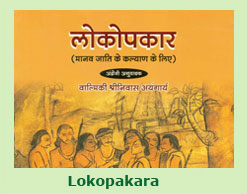
§
“2. Sins accumulate on account of the misdeeds of the people, averting god’s grace. The displeasure of gods results in the portents. The three kinds of portents are celestial, atmospheric, and terrestrial.” [1, 9]
§
“1. After having realized that ‘Vrikshayurveda’ is a revered and useful science to all living beings of the universe, I hereby present this treatise of ‘Vrikshayurveda for the due attention of learned people.” [1, 23]
§
“3. A field with a soil of good water-holding capacity should be identified and leveled properly. Seeds should be sown sufficiently deep (for growing annual crops). Pits measuring two cubits in length and breadth, and four cubits in depth should be prepared and filled with manure (for growing trees), and seeds sown in them.” [1, 23]
§
“4. Mouth freshener: The process of making herbal liquid mouth freshener is now described. Take the powders of the following ingredients in equal proportion: dried ginger, black pepper, long pepper, nut grass rhizomes, cinnamon, cinnamon leaves, cardamom, catechu, coriander, and honey. This mixture can be used as a mouth freshener by adding it to water and rinsing the mouth to have good mouth odor.” [1, 29]
§
“37. Divine perfume: Prepare a mixture of the powders of sandalwood, bharundi (heliotropium indicum) leaves, male flowers of screw-pine, unrefined sugar, agar, and costus roots taken in equal proportion. Add jaggery…to this final mixture and prepare oblong tables. This is called ‘divine incense’ and is amiable to all gods.”[1, 34]
§
“39. Incense for dissipation of bugs and other insects: the mixture of the powders of sandalwood, vidanga (Embelia ribes) seeds, flowers of arjun tree, along with jaggery…and honey dissipates flies, gnats, bugs and bats from the house when fumigated with it.” [1, 34]
§
“44. Fragrance of chandra mallika (sevantige). Prepare a mixture of the powders of one part of sweet marjoram leaves, one part of cinnamon, two parts of Indian olibanum, and four parts of coriander. Any fragrant flower will give the fragrance of chandra mallika flower, when sprinkled with this mixture.” [1, 35]
§
“11. Idli: Grind the washed split blackgram dhal and add clear water obtained from the surgace of the curd to it. Add asafetida, cumin seeds, coriander, and black pepper to it. Idlis prepared from this ground paste will be highly delicious.” [1, 39]
§
“54. Sikharini [Shrikhand]:
Add the mixture of the powders of cinnamon, dry ginger, black pepper, rock salt, jaggery (From cane sugar), nutmeg, zedoary, and ironwood flowers to curd proportionately. Fumigate this curd with chebulic myrobalan, lac, honey, and sugarcane juice. Add edible camphor to it later. This is called sikharini.” [1, 43]
§
Click here to Buy this Books!!!

References:
- Ayangarya, Valmiki Sreenivasa. Lokopakara (For the Benefit of People). Asian Agri-History Foundation. Secunderabad. 2006
